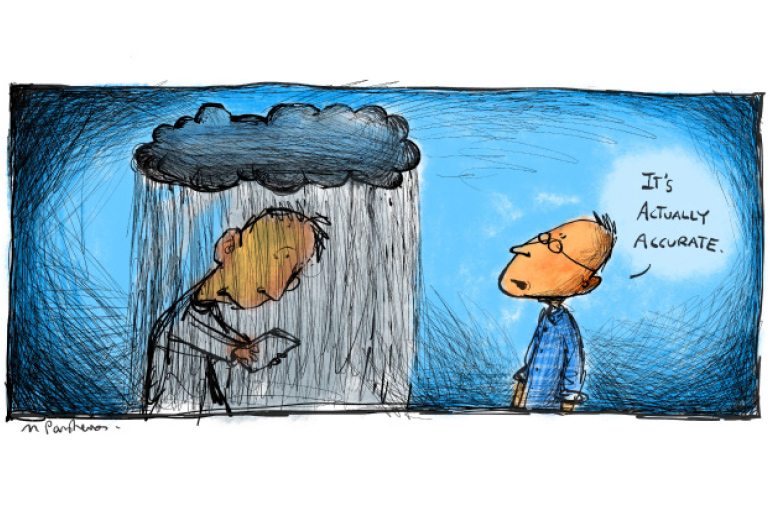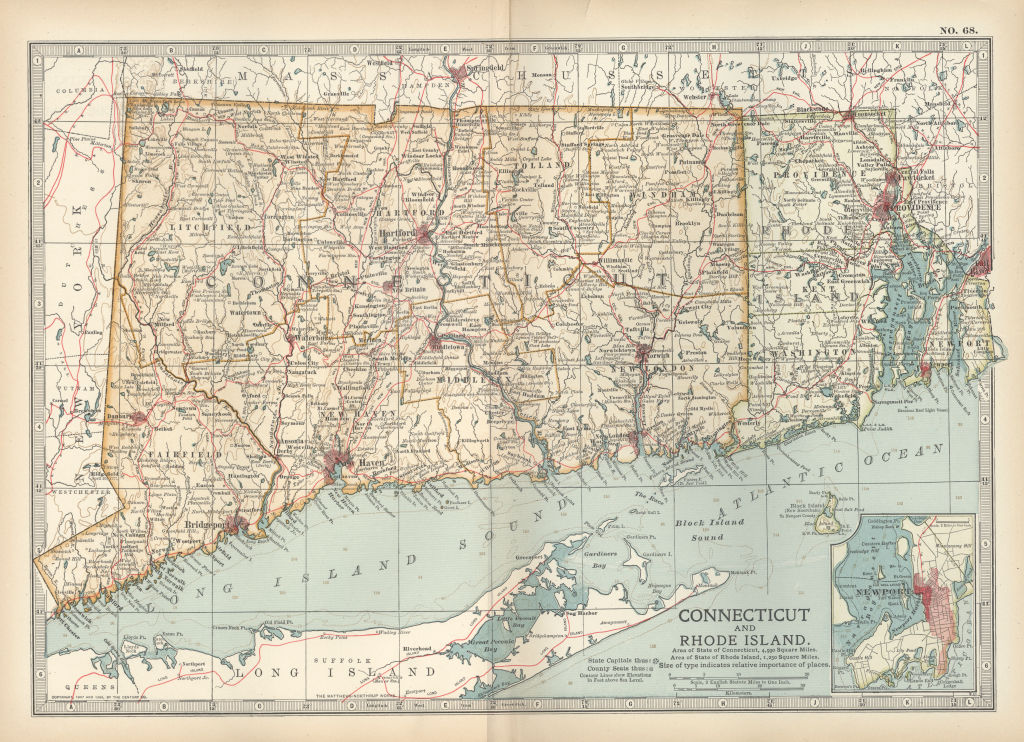Not So Fast: Accurate To-the-Minute Weather Reporting Hits a Bump in the Road

Do you get the same messages on your phone about the weather that I do? I get them almost daily. And this has been going on for the last six months.
“Light rain will start at 3:23 p.m. and will last the rest of the day.”
The predictions are often wrong and I wonder why they are wrong. But I know why they get to my phone. At the beginning of last year, my contact at the weather service—I have a particular contact there I call when I’m writing about the weather—told me excitedly that a new weather satellite had been launched and was in the sky above the East Coast and would soon be able to predict the weather with extraordinary accuracy. Down to the minute. It was now undergoing testing and was expected to go live in June 2017.
I wrote about that, about what it would be like to have weather served up ahead of time down to the minute. I thought it might be life-changing.
In June, I called him. It was still in testing, taking a bit longer than anticipated. It was now expected to go live before the end of the year, perhaps as soon as November. And indeed, when November came, I began to get these very precise messages on my phone. Unfortunately, they were wrong. They are still often wrong, but to a certain degree they seem to be getting less wrong as time goes on. I imagined they are tweaking the new satellite or something. I also thought it would be a good idea to hold off on these bragging predictions until they get it right. But I guess marketing wants to just muddle through.
And then, last week, news came that something has gone flooey with the cooling system, not on our satellite but on a nearby feeder satellite and, so far, they don’t know why. Twelve hours a day it works fine. But the other 12 hours, when the sun shines directly on it, the cooling system gets overloaded and the data it sends out is compromised.
I had thought when I was told about this that there was just one new satellite, but, it turns out, there are four. Ours, on the East Coast, went up first and works fine. Two over Japan went up and work fine. But now this last one went up to handle things over the West Coast of America, and this cooling problem is on THAT satellite.
Each of the satellites can do the job without working together, but it’s not as good as when they coordinate. With the way the earth spins, the weather comes from the west, because the atmosphere can’t move as fast as the earth. Thus, from our perspective, it comes sliding along from the west. So the problem is that this West Coast satellite, which is working only half time, is passing off degraded data to the East Coast satellite, and that degraded data is what it has to deal with. And that’s why at 3:23 p.m. it doesn’t start raining as it’s supposed to.
I might note that NOAA, in its report, is very technical and precise in explaining all this. The project, including launch, cost $11 billion. All four satellites have the advanced high-resolution camera, the sensitive magnetometer, an ultraviolet X-ray sensor, an ultraviolet imager and sensors to measure charged particles. Also working fine are the lightning mappers and the camera—which, they are proud to say, can take 200 shots a second and will go off automatically when lightning is observed.
But then there is the “star of the show”—the Advanced Baseline Imager, which provides infrared imagery. It monitors cloud formation, atmospheric motion, convective development, land and sea surface temperatures, ocean dynamics, flow of water, fire, smoke, volcanic ash, aerosols and air quality and vegetative health, and that is fully operational only half the time.
So, as you can imagine, 3:23 p.m. just might be 4:05 p.m..
“It is deflating, given the dramatic success that GOES-16 was, as well as Himawari 8 and 9,” Steve Volz, assistant administrator at NOAA, told a reporter from CBS. The East Coast satellite is GOES-16. “We expected the same performance with GOES-17 and we still hope for that. But it is a little bit upsetting to see this happen.”
Bottom line is that when the message says 3:23 p.m. for rain, don’t believe it. Better idea is to ask a farmer. They usually know what’s coming.



